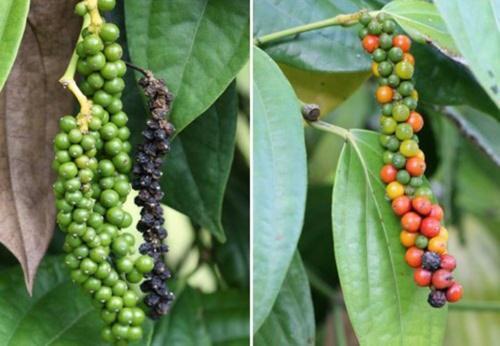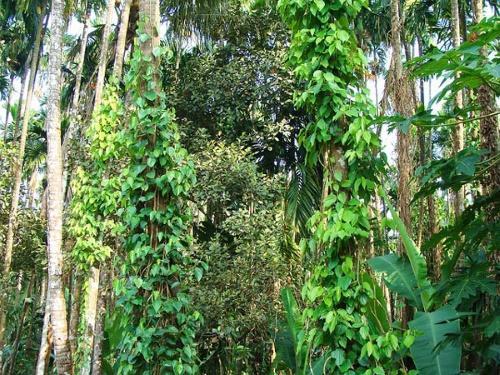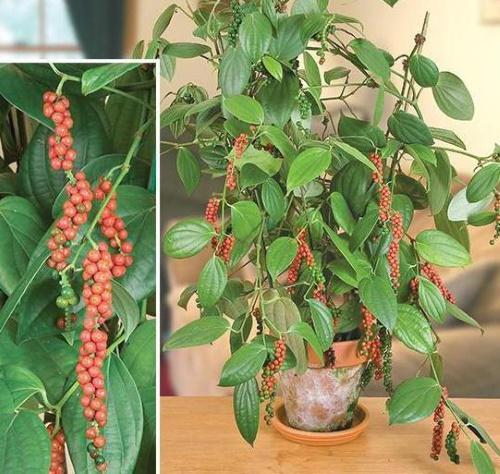How black pepper grows: a description of the plant and cultivation features
 Fans of culinary thrills without black peppercorns cannot imagine any dish. The spicy smell and tangy taste will turn meat into a delicacy and add an interesting touch to salads. What can we say about marinades for conservation - there is nowhere without pepper. Do you know how black pepper grows? Despite the name, this plant outwardly has nothing in common with Bulgarian or hot peppers. And they have different requirements for growing. What is black pepper as a culture?
Fans of culinary thrills without black peppercorns cannot imagine any dish. The spicy smell and tangy taste will turn meat into a delicacy and add an interesting touch to salads. What can we say about marinades for conservation - there is nowhere without pepper. Do you know how black pepper grows? Despite the name, this plant outwardly has nothing in common with Bulgarian or hot peppers. And they have different requirements for growing. What is black pepper as a culture?
The second name for black pepper is Malabar berry.
Description of the plant

Black, green and white peppers are one and the same culture. The only difference is when and how the crops were harvested. Red peas turn black during the drying process, they remain green if unripe peppers are collected. White pepper is obtained by clearing the peas from the pericarp after soaking.
How black pepper grows - cultivation features
 The lowest temperature a vine can tolerate is 10 ° C heat. For this reason, not only winter, but even autumn in the open field, we cannot stand it. But the liana will quite cope with the role of indoor potting culture.
The lowest temperature a vine can tolerate is 10 ° C heat. For this reason, not only winter, but even autumn in the open field, we cannot stand it. But the liana will quite cope with the role of indoor potting culture.
Getting the seeds is not a problem. You can also plant those peas that are among the seasonings in the kitchen, but only after soaking them for a couple of days.
Black pepper as a houseplant is quite unpretentious. It is enough just to reproduce the natural environment of its growth, and already in the second year of life, you can take the first harvest. In order for the vine to grow actively, it needs:
- loose nutritious soil (a mixture of leafy and soddy soil, sand and humus);
- good, but diffused lighting (east windows);
- humid air (a tray of water plus frequent spraying);
- warmth (in winter - not lower than 16 ° C heat);
- correct watering (abundant - from spring to autumn, scarce - in winter);
- seasonal feeding (from spring to autumn - twice a month with a mineral complex).
Given the "curly" nature of the vine, you need to install a support in the pot. So she can curl and maintain an upright position. Once every 2-3 years, the bush is transplanted into fresh soil.You can propagate such a plant by collecting seeds, as well as cuttings, layering and dividing the bush.